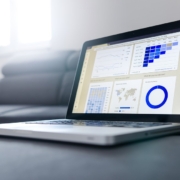Unraveling Economic Patterns: How Business Cycle Analysis Drives Success in an Uncertain World
As the global economy becomes increasingly complex and unpredictable, businesses are desperately seeking ways to navigate through the uncertainty and secure their success. One approach that has emerged as a guiding light in this chaotic landscape is business cycle analysis. By unraveling the economic patterns and understanding the various stages of the business cycle, businesses can make informed decisions and position themselves for sustained growth. In this article, we will explore how business cycle analysis can drive success in an uncertain world.
The Business Cycle: Understanding the Ups and Downs
At the heart of business cycle analysis is the recognition that economies go through a cyclical pattern of expansion and contraction over time. This cycle, consisting of four phases – expansion, peak, contraction, and trough – affects all industries and sectors, albeit to varying degrees. By examining historical data and economic indicators, analysts can identify where an economy stands in the business cycle and predict its future trajectory.
During the expansion phase, economic indicators such as GDP, employment rates, and consumer spending are on the rise. Businesses thrive as demand increases, and opportunities abound for entrepreneurs and investors. However, it’s crucial for businesses to recognize when an economy reaches its peak, as this marks the beginning of a contraction phase.
In the contraction phase, economic growth starts to slow down, and businesses face headwinds as demand weakens. Recognizing this early can allow businesses to adjust their strategies, such as cutting costs or diversifying their offerings, to mitigate potential losses. Finally, the trough phase represents the lowest point of the cycle, where economic indicators hit their bottom. Businesses that survive the contraction phase can take advantage of the subsequent recovery during the next expansion phase.
The Power of Anticipation: How Business Cycle Analysis Drives Success
Business cycle analysis equips businesses with knowledge, enabling them to anticipate changes in the economic environment and make strategic decisions accordingly. By recognizing the signs of an upcoming contraction or expansion, businesses can position themselves to reap the rewards or minimize the risks associated with each phase.
For instance, during an expansion phase, businesses can invest in expansion plans, hire additional staff, and launch new products or services to capitalize on the growing market. On the other hand, recognizing an upcoming contraction allows businesses to conserve cash, streamline operations, and focus on strengthening customer relationships to weather the storm.
Moreover, business cycle analysis is not limited to macro-level economic trends. It can also be applied to specific industries and sectors. By understanding how an industry performs at different stages of the business cycle, businesses can adapt their strategies accordingly. For example, in recessionary periods, certain industries, such as healthcare or discount retail, tend to be more resilient while luxury goods may suffer. This knowledge enables businesses to reallocate resources and adjust their product offerings to meet changing consumer preferences.
Challenges and Limitations: Navigating Uncertainty
While business cycle analysis offers valuable insights, it is not without its challenges and limitations. Firstly, accurately identifying the inflection points between different stages of the business cycle can be difficult, as data and indicators may be subject to revisions. Therefore, businesses must exercise caution and rely on a combination of economic indicators and expert analysis to make sound decisions.
Additionally, business cycle analysis does not provide an exact timeframe for each phase, making it challenging to time strategic moves precisely. Economic cycles can vary in duration, and external events, such as political instability or technological disruptions, can influence the timing and amplitude of business cycle fluctuations. Consequently, businesses should view business cycle analysis as a tool for informed decision-making rather than a crystal ball.
Conclusion: Leveraging Opportunities Amidst Uncertainty
While the global economy may be a black box of uncertainty, business cycle analysis offers a key to unlock its secrets. By understanding the cyclical nature of economies and industries, businesses can position themselves to thrive in times of expansion and survive during contractions. Although challenges and limitations exist, the power of anticipation and informed decision-making through business cycle analysis cannot be understated. As we navigate an increasingly volatile world, businesses that embrace this approach will have a competitive edge, driving their success amidst economic uncertainty.






